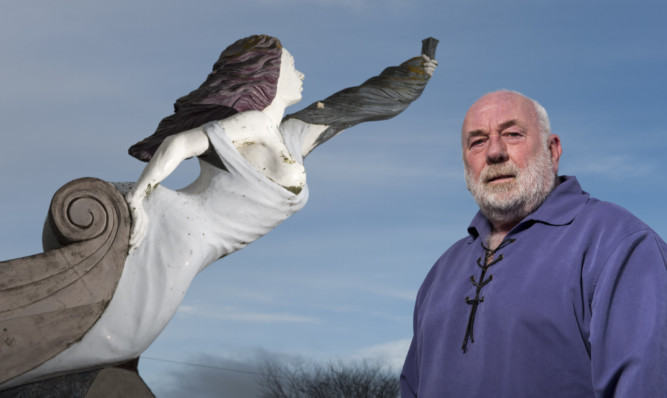The Cutty Sark. The very name conjures up romanticised images of life on the high seas.
Built on the Clyde in 1869 for the Jock Willis Shipping Line, the legendary sailing ship is the world’s sole surviving tea clipper, and was the fastest ship of her time.
Today she is an award-winning visitor attraction at the National Maritime Museum in Greenwich.
But it’s the Cutty Sark’s remarkable links with Angus and the Mearns which are being celebrated through a week-long programme of heritage events launched in the Mearns.
A centrepiece event takes place on Sunday November 22 when a Historic Scotland plaque is dedicated to the Cutty Sark’s designer Hercules Linton who was born in Inverbervie’s Market Square and was educated at the former Arbroath High School.
The events in Gourdon and Inverbervie will also celebrate boat builder Jeems Mowatt.
Glasgow shipping merchant John Willis commissioned Linton to design the famous tea clipper, which was launched on November 22 1869.
Linton later commissioned Mowatt to build two boats and supervised their construction at the Gourdon man’s yard.
Mowatt built more than 200 boats in his lifetime and the Maggie Law surf boat, which celebrated its 125th year since first launch this year, is the only one to survive today.
The plaque ceremony at Linton’s grave in the old Bervie kirkyard will be attended by descendants of Linton, the captain on the Cutty Sark’s maiden voyage George Moodie, and Andrew Dryburgh the carpenter’s mate on the same sail.
Hercules Linton was Marion Lapper’s great great grand uncle, and she is travelling from Ireland with a friend for the occasion. However, some of the family history remains sketchy.
Speaking from Dublin, Marion, 64, told The Courier: ”I would love to tell you some of my family history, but I’m afraid I can’t. All I have been told is that Hercules Linton was my great great grand uncle. My father, John William Ewing Linton, when he was alive, started to draw up a family tree, but sadly, I do not have a copy.
“As far as I know, I do have a sea chest that is off the Cutty Sark, but I have no proof, only what I was told by my father. The brass name plate that should be on the lid is missing.”
Jessica Lewis, curator of the Cutty Sark at the National Maritime Museum in Greenwich, which receives around 250,000 visitors per year, said she was “really excited” about attending the Mearns event. The Cutty Sark was the “last word” in commercial clippers at the time and Linton’s design was “quite radical” with its sleek, pointed bow.
She said: “The Cutty Sark was all about making money – getting goods to market before competitors.
“Linton was very daring with the design but it paid off. The Cutty Sark was at the cutting edge of commercial shipping before sailing ships gave way to steam propulsion, and the opening of the Suez Canal meant that steam ships also enjoyed a much shorter route to China.”
As programme organiser, and director of the Howe o’the Mearns Heritage Association, Dave Ramsay puts his lifelong love of heritage down to being born next to Arbroath Abbey and being able to smell the North Sea in his nostrils. The retired principal planning officer for adult services with Aberdeen City Council has lived next to the sea at Catterline for 20 years.
He has combined his love of music and heritage over the years through song writing and other celebrations of local history. His works include a song about the gruesome murder off Arbroath, known as the Red Head Tragedy, that led to ship’s mate Andrew Brown being sent to the gallows for the axe murder of Captain John Greig while at sea in 1865.
He has also marked the Mearns connections to both Robert Burns and his Stonehaven-born father. Cutty Sark was, of course, a nickname given to the witch Nannie Dee, a fictional character created by Robert Burns in his Tam o’ Shanter.
And when Burns visited the Mearns during a tour in 1787, his journey took him from Laurencekirk to Montrose, and he stopped to water his horse in Hillside.
But Dave is particularly excited about the Linton Mowatt events which mark “a very important day for Inverbervie, Hercules Linton and the Cutty Sark”.
He is particularly pleased that a “gap” in the Greenwich museum’s history is being plugged thanks to work he undertook with P4 pupils at Bervie school over the past year. A recording of the ‘Ballad of Hercules Linton’, recorded by him with pupils, will be presented to the museum curator and taken to London. The pupils have also received a formal letter from First Minister Nicola Sturgeon thanking them for their efforts.
“It’s a remarkable story and one we are proud to celebrate,”he added.
malexander@thecourier.co.uk
